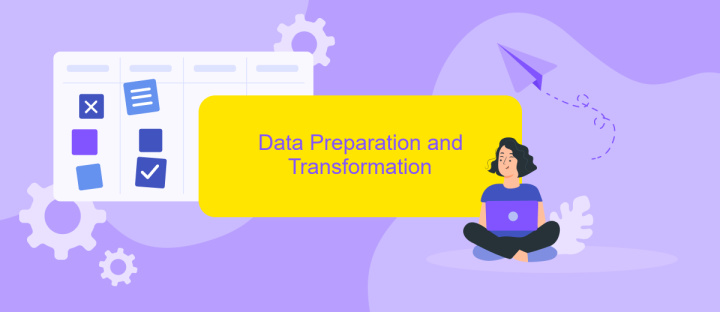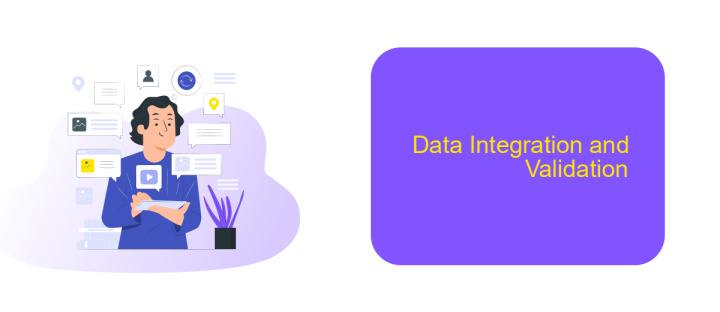Data Integration Process Steps
Data integration is a critical process for combining data from different sources into a unified view, enabling more comprehensive analysis and decision-making. This article outlines the essential steps involved in the data integration process, from data extraction and transformation to loading and validation. Understanding these steps is crucial for ensuring data accuracy, consistency, and usability in any organization.
Understanding Business Requirements
Understanding business requirements is a crucial step in the data integration process. It involves identifying and documenting the specific needs and objectives of the organization to ensure that the integration solution aligns with business goals. This step lays the foundation for effective data integration by clarifying what data needs to be integrated, how it should be processed, and what outcomes are expected.
- Identify key stakeholders and gather their requirements.
- Define the scope of the data integration project.
- Determine the data sources and types of data to be integrated.
- Establish data quality and governance standards.
- Set clear objectives and success criteria for the integration.
Tools like ApiX-Drive can facilitate this process by providing a user-friendly platform to connect various data sources and automate data flows. By leveraging such tools, businesses can streamline the integration process, ensuring that data is accurately and efficiently consolidated to meet their specific requirements. Proper understanding and documentation of business requirements are essential for achieving a successful data integration project.
Data Discovery and Analysis

Data discovery and analysis is the foundational step in the data integration process. This phase involves identifying and understanding the data sources that will be integrated. It requires a comprehensive assessment of the data's structure, quality, and relevance to ensure it aligns with the organization's goals. By conducting thorough data profiling, businesses can uncover hidden patterns, inconsistencies, and potential issues that could affect the integration process. This step is crucial for setting the stage for a seamless and efficient data integration strategy.
During this phase, leveraging tools and services such as ApiX-Drive can significantly streamline the process. ApiX-Drive offers robust features for connecting diverse data sources, automating data flows, and ensuring data consistency across platforms. By utilizing such services, organizations can simplify the complex task of data discovery and analysis, reducing manual efforts and minimizing errors. Ultimately, this enables a more accurate and reliable integration, facilitating better decision-making and operational efficiency.
Data Preparation and Transformation

Data preparation and transformation are critical steps in the data integration process, ensuring that raw data is cleansed, formatted, and structured for further analysis. These steps help in enhancing data quality, making it more reliable and useful for decision-making.
- Data Cleaning: This involves identifying and correcting errors, such as missing values or duplicates, to ensure data accuracy.
- Data Formatting: Converting data into a consistent format that can be easily integrated with other datasets.
- Data Enrichment: Adding additional information to the data to enhance its value.
- Data Transformation: Modifying data structure and values to fit the target system's requirements.
- Data Validation: Ensuring that the transformed data meets specific quality standards before integration.
Using tools like ApiX-Drive can significantly streamline these processes. ApiX-Drive offers automated data integration and transformation capabilities, reducing manual effort and minimizing errors. By leveraging such tools, organizations can ensure a smoother, more efficient data integration process, ultimately leading to better insights and business outcomes.
Data Integration and Validation

Data integration involves combining data from different sources into a single, unified view. This process is essential for businesses to ensure that they have accurate and complete data for decision-making purposes. During integration, data from various databases, applications, and systems are brought together, often requiring transformation to be compatible with the target system.
Validation is a crucial step in the data integration process. It ensures that the integrated data is accurate, consistent, and meets the required quality standards. This step helps in identifying and rectifying errors, inconsistencies, and missing values in the data before it is used for analysis or reporting.
- Source data extraction
- Data transformation and mapping
- Data loading into the target system
- Data validation and quality checks
- Ongoing monitoring and maintenance
Using tools like ApiX-Drive can streamline the data integration and validation process. ApiX-Drive allows for seamless integration of various applications and services, automating the data flow and ensuring that the data is validated and ready for use. This not only saves time but also reduces the risk of errors, enhancing the overall data quality and reliability.
Data Governance and Maintenance
Effective data governance and maintenance are critical components of a successful data integration process. Establishing clear policies and procedures ensures data quality, consistency, and security across all integrated systems. This involves defining roles and responsibilities for data management, implementing data validation rules, and regularly auditing data for accuracy. Utilizing automated tools and platforms, such as ApiX-Drive, can streamline these tasks by providing seamless integration capabilities and real-time data monitoring.
Continuous maintenance is essential to adapt to evolving business needs and technological advancements. Regularly updating integration configurations and monitoring data flows helps identify and rectify issues promptly. Implementing robust data backup and recovery plans safeguards against data loss and ensures business continuity. By prioritizing data governance and maintenance, organizations can achieve reliable and scalable data integration, ultimately driving better decision-making and operational efficiency.
FAQ
What are the primary steps involved in the data integration process?
Why is data transformation important in data integration?
How can I automate the data integration process?
What are the common challenges in data integration?
How do I ensure data security during the integration process?
Do you want to achieve your goals in business, career and life faster and better? Do it with ApiX-Drive – a tool that will remove a significant part of the routine from workflows and free up additional time to achieve your goals. Test the capabilities of Apix-Drive for free – see for yourself the effectiveness of the tool.

